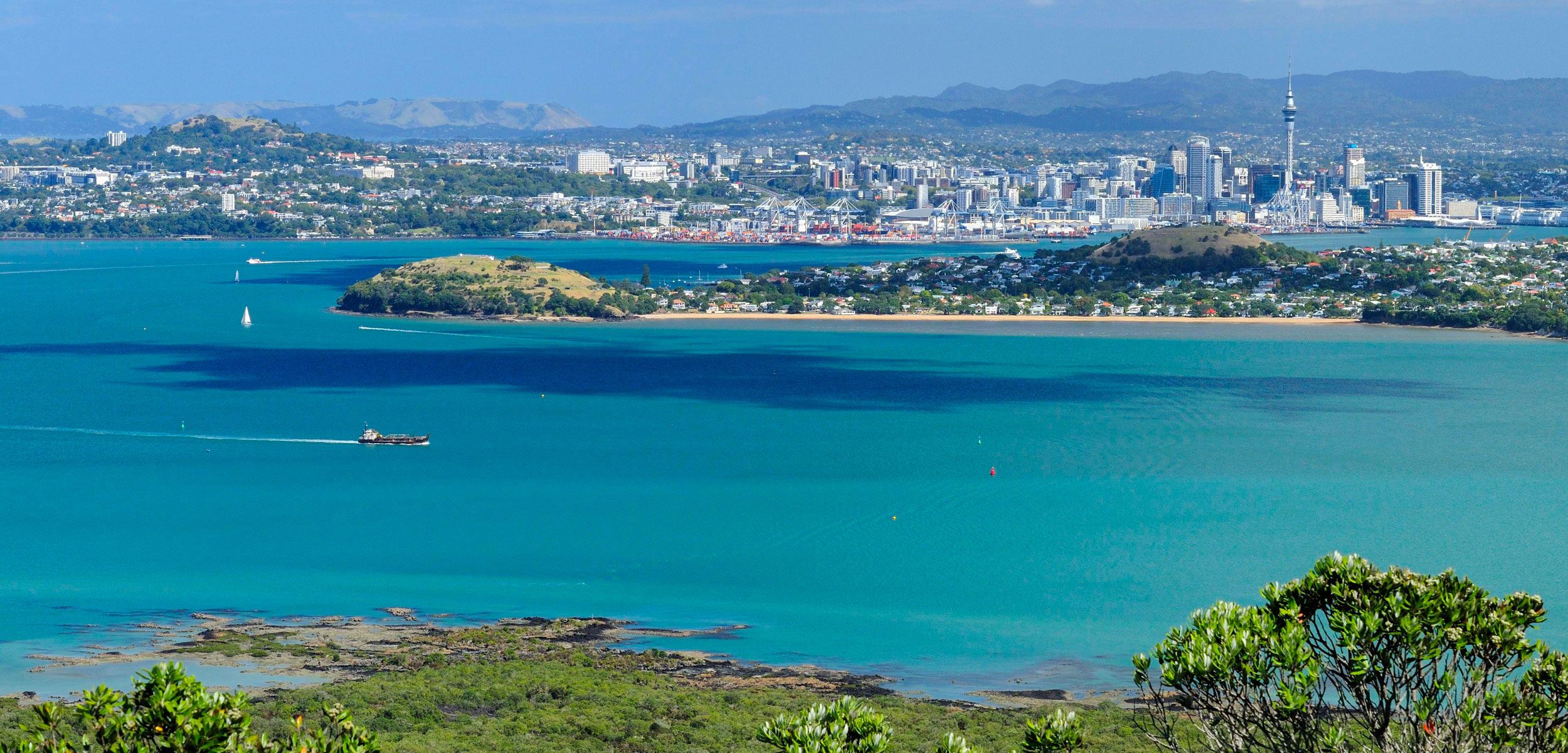The Tranquility of Lockdown
For marine animals in New Zealand’s busy waterways, COVID-19 restrictions brought brief respite from noise pollution.
Article body copy
At midnight on March 26, 2020, as the COVID-19 pandemic was intensifying, New Zealand imposed one of the world’s earliest and strictest lockdowns. The restrictions applied not just on land but also at sea, so for almost two months recreational and nonessential commercial vessels sat idle. In Auckland’s Hauraki Gulf, the persistent hum of motors—including those of the more than 130,000 small recreational boats owned by city residents, the highest per capita in the world—suddenly dropped away.
By chance, researchers including Matthew Pine, an Auckland-based marine biologist with British Columbia’s University of Victoria, already had hydrophones in place around the Gulf. When Pine realized a lockdown was inevitable, he and his colleagues raced out to refresh the batteries and memory cards on the devices.
A week later, New Zealanders were confined to their homes. They could, however, exercise outside. So, each day for the next seven weeks, Pine walked with his wife along the city’s Takapuna Beach, gazing out at the islands, the uncharacteristically empty ocean, and the spot where he knew one of his hydrophones was moored. Gradually, the possibilities dawned on him—here was an unprecedented chance to gather data about what the Hauraki Gulf, the country’s busiest coastal waterway, would sound like without people. “I just couldn’t wait to listen,” he says.
When he was able to access the hydrophones, in just one recording, Pine could hear a Bryde’s whale calling, fish popping and grunting, dolphins whistling and clicking, a seal barking, invertebrates climbing over the hydrophone, a distant ship out in the Pacific Ocean, and waves crashing on island shorelines three kilometers away. “It’s truly a sonic world,” he says. But in the pre- and post-lockdown audio, most of those sounds were obscured by the whine of engines.
Analyzing the hydrophone data, Pine and his colleagues from the University of Auckland revealed that 12 hours after the lockdown began, underwater sound levels in one part of the Gulf, the Rangitoto Channel, dropped almost threefold. Ocean noise levels decreased by two decibels for every 10 percent fall in daily vessel noise. By the height of the lockdown, boats could be heard only eight percent of the day. Anthropogenic noise in the once-bustling waters of this boat-loving city of 1.5 million people was suddenly similar to noise in the summer in the Arctic Ocean.
Pine and his colleagues calculated that the sudden dearth of noise increased the range of bottlenose dolphins’ calls and whistles from 2.9 kilometers to nearly four kilometers at one offshore site. Closer to Auckland, fish communication improved even more dramatically—from just a few meters to 155 meters.
Marine animals, says Pine, “depend on sound for pretty much every one of their critical life processes,” including mating, social behavior, finding food, and avoiding predators. For them, anthropogenic noise is as disruptive as a thick fog is for sight-dependent humans.
From previous research, scientists know that this masking of the natural soundscape can subject marine animals—and even plants—to constant stress, and cause long-term consequences, says Denise Risch, an ecologist with the Scottish Association for Marine Science who was not involved in the study. “You might not die if you’re stressed for a week or so, but if you’re stressed continuously, you might have a shorter lifetime, or you may reproduce less,” she says.
Though COVID-19 restrictions have provided opportunities to study ocean noise in many places worldwide, New Zealand was a particularly good laboratory for this natural experiment, says Klaus Lucke, an Australia-based bioacoustician at the underwater sound engineering company Jasco Applied Sciences, who was also not part of Pine’s study. The country had a long, strict lockdown during the busy late-summer boating season, Lucke says. The Hauraki Gulf is also home to diverse marine fauna—at least 22 kinds of whales and dolphins visit the area, around a quarter of the world’s cetacean species. “The effect was stronger than you would probably find anywhere else in the world,” he says.
Because of the unparalleled natural experiment afforded by the lockdown, the researchers were able to measure the contribution that Auckland’s many small vessels make to ocean noise pollution—and assess the impact it might be having on the Gulf’s wildlife.
In the past, the amount of noise pollution created by small recreational vessels has been thought to be minor and transient, Pine says. But the lockdown data has shown, for the first time, that in busy areas like the Hauraki Gulf, small vessels “really do have a big influence on the soundscape, and that definitely impacts marine life.”
Pine adds that one side effect of the first lockdown and the travel ban was that many Aucklanders who usually spend money on overseas holidays bought boats instead—boats that could soon be on the water again after New Zealand’s current lockdown.
“It’s hard to wrap your head around how small boats can make a big difference to a big ocean,” says Pine.
“A boat on its own doesn’t have any impact. It’s when you put 100,000 of them out there that they do … and boat sales through 2020 really went up. Are we going to return to even more noise than before lockdown?”

